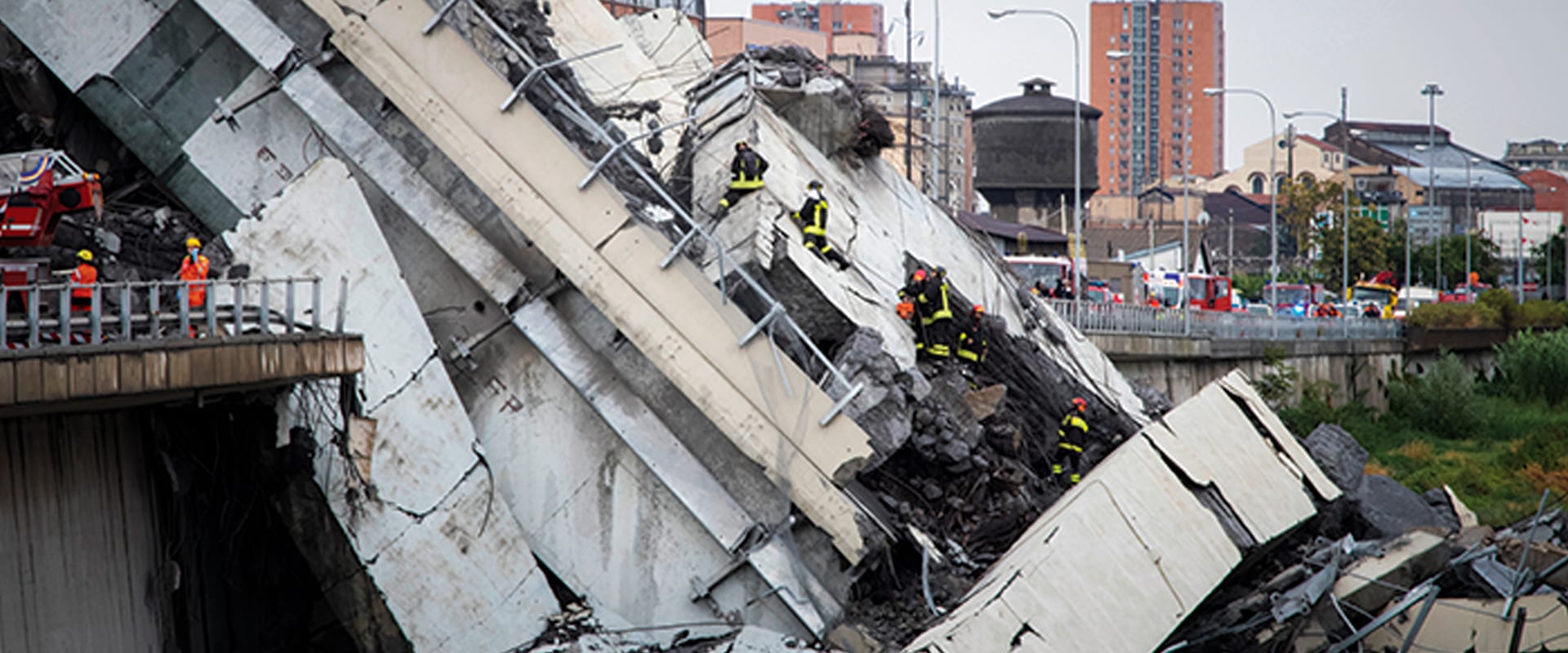
28 Sep Maximum scrutiny needed to stop infrastructure disasters
The consequences of poorly executed public infrastructure can be deadly but there is a way forward, says Transparency International’s Claire Martin.
Neglect, corruption and mafia infiltration: the Genoa bridge collapse shines spotlight on Italy’s woeful infrastructure’; ‘The shame of Sichuan’s tofu schools’; ‘The never-ending story: how BER airport became the laughing stock of Berlin’.
Newspaper headlines from around the world, year in, year out, point to the sometimes deadly consequences of poorly executed public infrastructure.
At the same time, a rapidly expanding global population coupled with extensive rural to urban migration is triggering massive demand for infrastructure investment.
Some estimates place required investment at as much as $94trn by 2040.
Infrastructure procurement has long been seen to pose particular risks owing to the very nature of the schemes – complex contractual structures, numerous project phases,
the sheer size, uniqueness and complexity of projects and an overall lack of transparency in the industry.
These aspects contribute to an environment in which irregularities such as bribery, extortion and fraud can be difficult to prevent or detect.
It is essential that public infrastructure delivers value for money, is of high quality and safe, and corresponding investments need to be subject to intensive scrutiny throughout.
Working together with civil society partners from the Open Contracting Partnership, the Infrastructure Transparency Initiative, Hivos and Article 19, Transparency International has co-launched the Clean Contracting Manifesto, which sets out a vision for maximising scrutiny.
Drawing on our combined work around the world, this envisages five core pillars.
Fully open data at all stages of the public procurement process is the bedrock of increased scrutiny.
By allowing in-depth fact finding and the analysis of relationships across large quantities of data, potential problems are easier to spot.
For example, Transparency International’s Slovakia chapter showed how a Slovak hospital paid twice as much for the same CT scanner as a Czech hospital.
The second key pillar is independent civil society monitoring of specific projects.
Tools such as the Integrity Pact are essential to building trust and cooperation between civil society, public officials and bidders committed to preventing corruption in public contracting.
Currently 17 Integrity Pacts are being trialled across the EU and a model pact focusing on infrastructure is being developed.
There must also be effective and meaningful participation by affected communities in all phases of the public procurement process to both meet their needs and broaden the group of people motivated to identify irregularities.
Civil society must have the resources and expertise to engage with the public and private sectors to advance an accountable public procurement system.
It should not be hampered by laws that restrict its ability to promote the public interest.
In addition, there is a need for independent, high-quality investigative journalism capable of investigating potential corruption.
The reach of such an approach is immense.
In Ukraine, as of January 2018, 22 civil society organisations were actively monitoring procurement, using an online platform built on open data to find over 5,000 cases of suspicious activity in the previous six months.
To maintain such a level of scrutiny, sanctions must be put in place and effectively implemented, which will both deter misbehaviour and encourage efforts to reveal it.
If we don’t want to read more devastating headlines, we need to find ways to involve a broader group of people in scrutinising spending.
The Clean Contracting Manifesto sets out a vision for how to achieve this.
This is a news article curated and replicated from the Public Finance International
